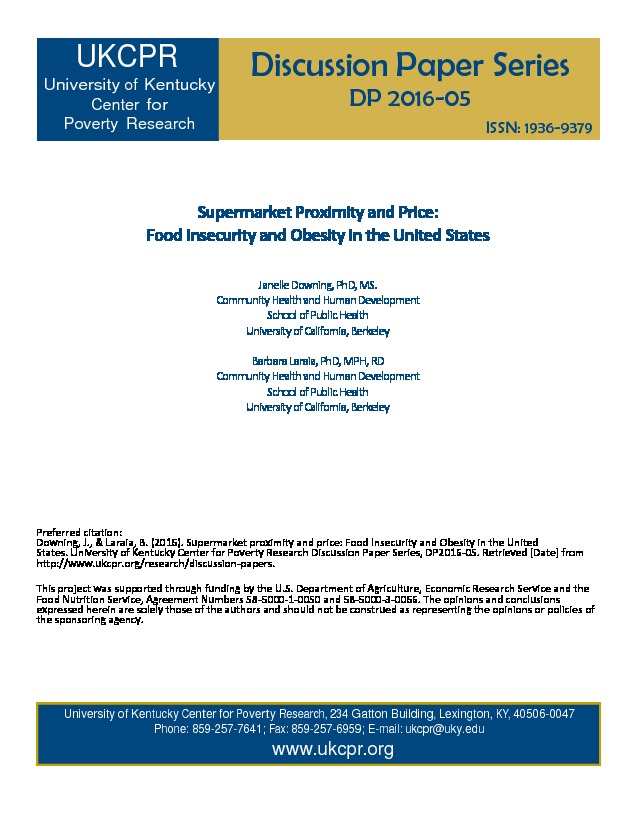Our research aims to address understand how both the subjective experience and objective measures of the “distance problem” and “food price problem” are associated with household food insecurity and obesity. First, we estimate the association of perceived distance and low prices with food insecurity and obesity. Next, we estimate how objectively measured access to supermarkets – based on presence of supermarkets and prices – relate to food insecurity and obesity. Specifically, our research questions are as follows:
1. Are individuals who select their primary supermarket based on perceived price or proximity more likely to live in a food insecure household and be obese, compared to those who select their primary supermarket based on both low prices and perceived proximity?
2. Are individuals who reside in a food desert more likely to be a part of a food insecure household and be obese, compared to those who do not live in a food desert?
3. Are individuals who reside in a high poverty area with higher than average supermarket prices are more likely to be a part of a food insecure household and be obese, compared to those who live in areas with low or average supermarket prices?
Research
FoodAPSPDF Thumbnail
